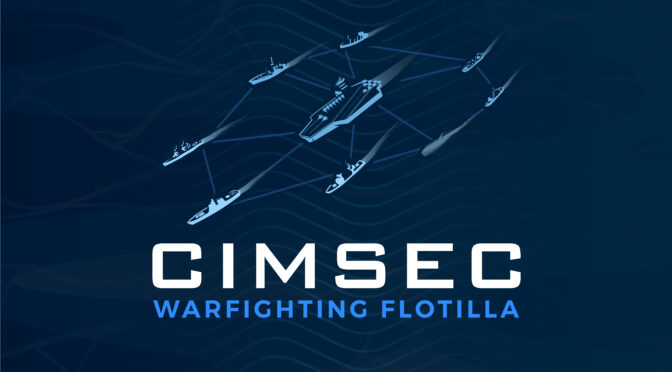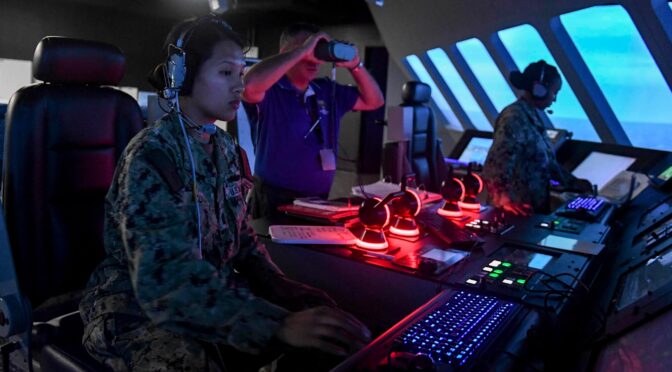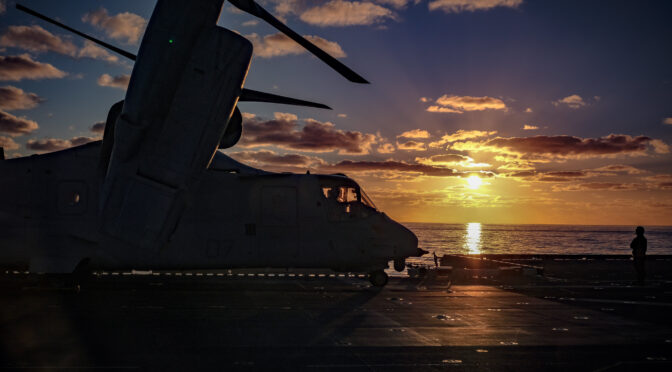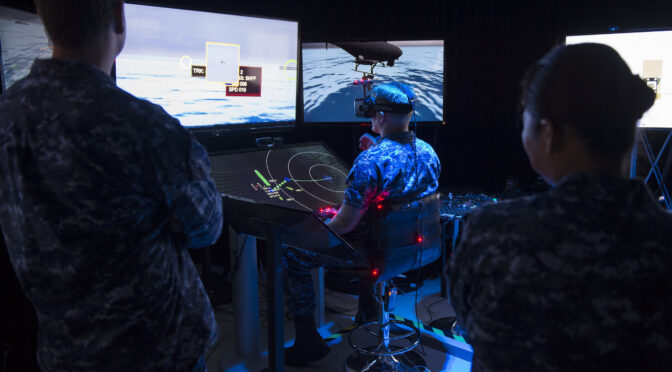By Dmitry Filipoff
In this conversation on U.S. Navy strategy, Steve Wills discusses themes and lessons from his new book, Strategy Shelved: The Collapse of Cold War Naval Strategic Planning. From the effects of the Goldwater-Nichols act, to tensions between analysis and strategy offices in OPNAV, Wills discusses how Navy strategy and strategy development has changed over recent decades.
You point to several critical events that combined to affect Navy strategy: The passage of the Goldwater-Nichols Act, the collapse of the Soviet Union, and the Gulf War. How did these events affect Navy strategy and strategy development?
critical events that combined to affect Navy strategy: The passage of the Goldwater-Nichols Act, the collapse of the Soviet Union, and the Gulf War. How did these events affect Navy strategy and strategy development?
The Goldwater-Nichols Act changed the Navy’s strategic outlook at the institutional and individual level of experience. The shift to a focus on the regional commanders vice the services tended to change the Navy’s outlook from a global force to one focused on providing forces to land-based regional commanders. It is difficult to think globally about the size and composition of naval forces when the focus is on satisfying regional demands.
At the individual level, the Goldwater-Nichols Act focus on filling joint positions tended to draw rising young officers away to joint positions as they offered more upward mobility than service staffs. I think the most significant of these changes however was empowering the regional commanders (COCOMs) at the expense of Washington-based service chiefs and their staffs. The legislation turned upside down the traditional U.S. system of centralized planning and decentralized execution of military operations.
In its place today we have regional commanders doing their own strategies separate of their fellow leaders while the JCS is trying to manage operational and even tactical levels of war through measures like the Joint Warfighting Concept (JWC). In World War II, Chief of Naval Operations Admiral Ernie King set strategy, but he and Army Chief of Staff General George C. Marshall did not tell Admiral Chester Nimitz and General Douglas MacArthur how they should organize their forces or how they should fight in their theaters. Goldwater-Nichols is directly responsible for this unbalanced condition that is seriously damaging the ability of the U.S. to create global strategies for combating global rivals like China and Russia.
You reference the 1980s Maritime Strategy and the “…From the Sea” document as among the more influential Navy strategy products in recent decades. Among the many strategy documents referenced in the book, what made these stand out? How can we assess the influence and impact of a strategy document?
The 1980’s Maritime Strategy stood out for a number of reasons. It was directly tied to a specific Navy force structure (the 600-ship navy) unlike more recent strategies that do not have a specific ship requirement. The Maritime Strategy had broad, bipartisan support from Congress. It was also tied to the national strategy of containment and, if necessary, combat against the Soviet Union. Unlike most other strategic concepts, the Navy exercised Maritime Strategy concepts at sea in multiple regions as noted by former Navy Secretary John Lehman in his book Oceans Ventured.
Finally, the Maritime Strategy was easy to engage with whether the reader or recipient of the brief was a seasoned navy professional or a civilian with little naval knowledge. It included maps with specific forces and arrows depicting an outline of what the Navy planned to do, and when and most notably where it would act. Strategies since the 1980s Maritime Strategy have largely eschewed maps in favor of glossy images of ships and sailors doing their thing at sea. Nice, but not really helpful in explaining what the Navy is strategically trying to accomplish.
The 1992 “…From the Sea” white paper was not a strategy with maps and goals as was its 1980s predecessor, but was rather a white paper suggesting what concepts the Navy and the Marine Corps would employ in the post-Cold War era. Its central point that the Navy would be a supporting force for operations fought primarily on land around the Eurasian littoral became the central focus of the service for the next 25 years. In that regard, “…From the Sea” was more influential and long-lasting than the 1980s Maritime Strategy. The Navy’s primary focus since 1992 has been being a supporting force for conflicts with regional powers and non-state actors without significant naval forces of their own. Perhaps this is now why it has been challenging to get the service to return to a “war at sea” mentality where major combat operations would primarily be conducted against opponents with similar or even in some cases superior naval capabilities.
An important theme in the book is the evolving power differential between systems analysis and strategy. How did strategy development change when analysts were more influential than politico-military strategists, and vice versa? What should the analyst-strategist relationship look like?
I think the influence of different factions on the Chief of Naval Operations (OPNAV) staff in terms of the creation of naval strategy matters a great deal. There was a relative balance between these two disciplines from the late 1960s through the mid-1980s until the advent of the Maritime Strategy and the 600-ship navy. The naval analyst discipline believed that the 600-ship navy was unsustainable in the long term and that the Maritime Strategy was too aggressive and dangerous in the face of the assumed Soviet threat. Chief of Naval Operations Admiral James Watkins and Navy Secretary John Lehman did not agree and subsequently severely reduced the size and scope of naval analyses offices supporting the CNO’s staff.
When the Cold War ended and the Navy had no opponent around which to organize either by geography or threat, the naval analyses community returned in the guise of the OPNAV staff element producing the Navy’s annual budget input. In a world without notable opponents the only long-range strategy document turned out to be the budget and as a result the analyses community prospered while the strategy community declined to low levels of influence. As a result of this decline, and analyses’ domination of OPNAV for over three decades, it is challenging for the Navy to think in terms of threats and geographic requirements that current budget levels do not support. The analyses community in return has labeled any strategy document that strays beyond current funding as “unsustainable,” ignoring the fact that any one CNO or SECNAV might be able to secure that additional funding if the strategy is well-conceived and well-argued.
The right choice is often a balance between these two communities that allows for innovative strategy concepts to meet the threat, but balanced by budget limitations. It cannot be “all or nothing” as it has been since 1991.
As the Navy faced budget cuts after the end of the Cold War the preservation of diminishing force structure became an overriding priority. How did this focus on force structure assessment affect strategy development?
That is an excellent question. Being so focused on the preservation of the newest force structure, the capabilities it provided for present-day operations, and the math needed to sustain that effort caused the Navy to often ignore evolving threats. If your strategy is based only on your budget, then why think further afield? Force structure assessments used to be tied to the threat, but without a notable threat like a major competitor, the force then becomes a set of capabilities the navy has to argue for and defend against the needs of other services. The strategy starts to become about how to beat the other services for more of the budget and not about meeting an outside challenge.
The U.S. now faces two major outside challengers (China and Russia) so the force structure assessment needs to again be tied to combating a threat rather than just preserving a capability in the face of interservice rivalry. Goldwater-Nichols did not get rid of service “parochialism;” instead it created what some have called a “tyranny of jointness” where getting the joint balance right is seen as more important that getting the right services the right equipment for the task.
The book examines decades of critical reorganizations of the OPNAV staff. How did these reorganizations strengthen or weaken Navy strategy development over the years?
Reorganizations of the OPNAV staff are the prerogative of the CNO and done to support what that officer wants to accomplish. In the absence of an opponent since 1991, those reorganizations have placed more power and emphasis on the Navy’s budgetary and warfare roles rather than strategy. It is also difficult to return to a culture of strategy development after decades of what naval historian Peter Haynes calls a “strategy of means” where the budget became the de facto navy strategy.
How would you assess the quality of Navy strategy and strategy development today? Are there areas that have room for improvement?
The Navy has always had a dedicated core of strategy experts; both uniformed and civilian (government and think tank personnel). The events I describe in the book (the end of the Cold War, the Goldwater-Nichols provisions, and the outcomes of the First Gulf War) have tended to make it more difficult for strategists to gain the ear of senior leaders.
I think that situation is changing. The United States again faces peer rivals at sea in China and Russia. The Tri-Service Maritime Strategy signed by the Navy, the Marine Corps and the Coast Guard late last year was a good first step toward crafting an effective global strategy to address those adversaries in peace and war. The Naval War College and the Naval Postgraduate School are educating more naval strategy experts. There are many more sources on naval and maritime strategy than in the past, including books by John Lehman, John Hattendorf, Peter Haynes, Seth Cropsey, Jerry Hendrix, and of course my mentor Peter Swartz, whose many CNA works on naval strategy are now available on the CNA website. CNA itself has never stopped working on navy strategy products and continues to advise OPNAV on maritime strategy issues. Other voices including members of Congress such as Elaine Luria and Mike Gallagher who have called on the naval services to better explain the strategy behind their POM requests. These are all positive changes.
There are of course challenges and the provisions of the Goldwater-Nichols Act still create roadblocks to the traditional naval means of organizing strategy and operations. Traditionally, the Navy and Marine Corps have engaged in centralized strategic planning, but decentralized execution of those plans at the operational and tactical levels of war. This is how the Cold War unfolded with an overall strategy of containment of the Soviet Union as a baseline for both the strategies of regional commanders and those of the services to deal with naval-specific issues.
The provisions of Goldwater-Nichols have changed this over time. In the absence of a peer opponent around which to organize a global strategy, regional combatant commanders plan their own strategies and demand forces to execute them independent in most cases of the needs of their peers or service providers of forces. Instead of centralized planning, the Joint Staff now seeks to tell operational forces how to fight through documents like the Joint Warfighting Concept. While this problem was not as acute in the period after the Cold War when the U.S. did not have active peer rivals, the current situation of two peer rivals again demands a return to traditional practice. The Goldwater-Nichols Act stands in the way of such a return.
The Navy once produced detailed strategies such as War Plan Orange for Pacific operations before the Second World War and the Maritime Strategy for potential operations in the 1980s. CIMSEC recently covered the 1980s Maritime Strategy process in excellent detail. While many leaders today believe that the Navy and Marine Corps should not be producing strategies, where is the alternative, centralized global plan for operations against China and/or Russia? The JCS and Joint Staff don’t do strategy products. Who does, other than civilian authorities who potentially change every four years?
In conclusion, while the Navy has made great strides in understanding how it used to do strategy and how it might do so in the future, structural barriers such as the Goldwater-Nichols provisions that empowered regional commanders are impeding the naval services from again creating strategy.
Steven Wills is a Research Analyst at CNA, a research organization in Arlington, VA, and an expert in U.S. Navy strategy and policy. He is a Ph.D. military historian from Ohio University and a retired surface warfare officer. These views are presented in a personal capacity and do not necessarily reflect the views of CNA or the U.S. Navy.
Dmitry Filipoff is CIMSEC’s Director of Online Content. Contact him at Content@cimsec.org.
Featured Image: CORAL SEA (July 19, 2021) A U.S. Marine Corps MV-22B Osprey with Marine Medium Tiltrotor Squadron 265 (Reinforced), 31st Marine Expeditionary Unit (MEU), prepares for take-off aboard the amphibious assault ship USS America (LHA 6), during Talisman Sabre. (U.S. Marine Corps photo by Staff Sgt. John Tetrault)





